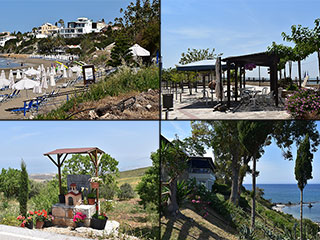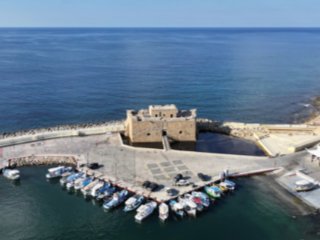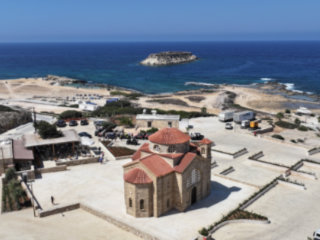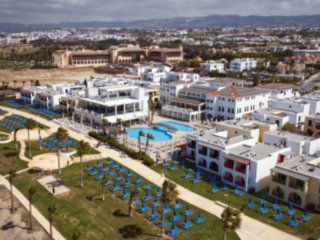The Church of St George Nicoxylitis
Polis-Bound
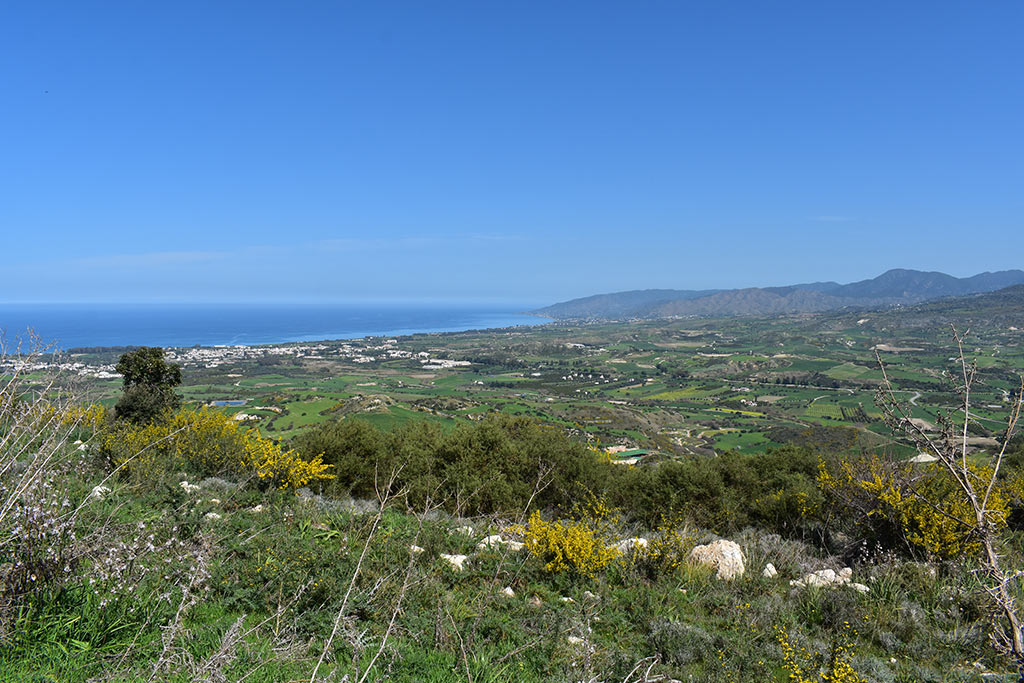
Anyway, having had our fill of the church we continued down the track. The going gets a bit more heavier going now, and towards the end it is no place to be after lots of rain, so do bear that in mind if you are thinking of following us. It was such a pretty route that I will probably publish a little film of the street view footage I took, and you will be able to judge it for yourself then.

Mysterious Ruins
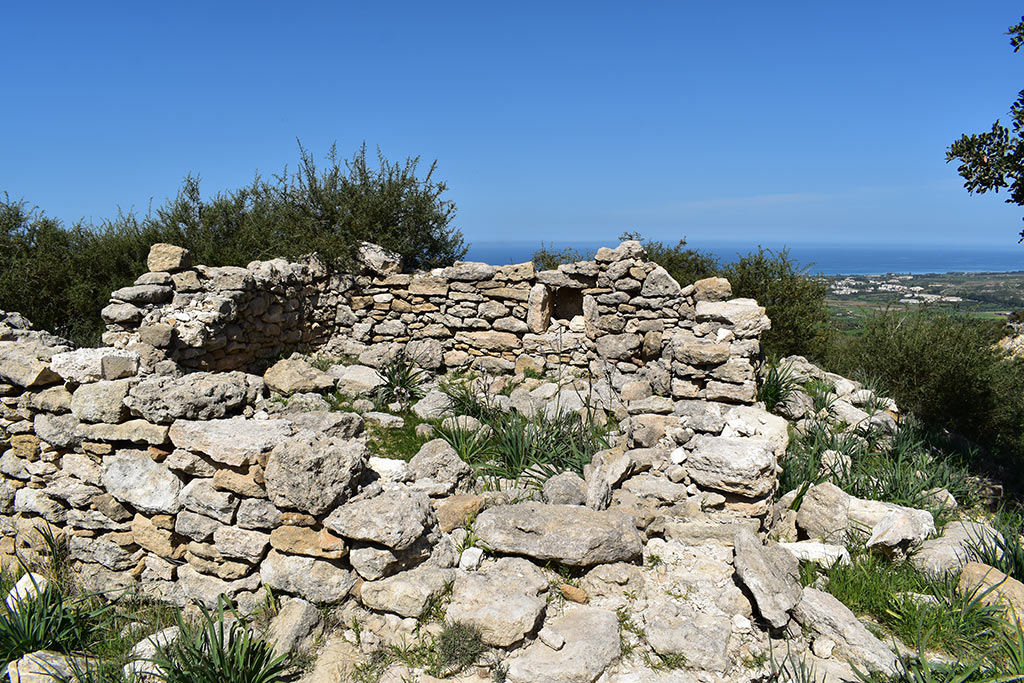
Further down the track, passed a goat farm, we came across some more ruins. I tried looking this up on Kitchener's Victorian Map of Cyprus, but that was of no help. Indeed, when I looked at the monastery on the old map, it was quite some distance from the church we just visited. Normally you would expect a certain degree of inaccuracy, but this was way off. Take a look at the comparison map and you can see what I mean:
Old Map vs New Map
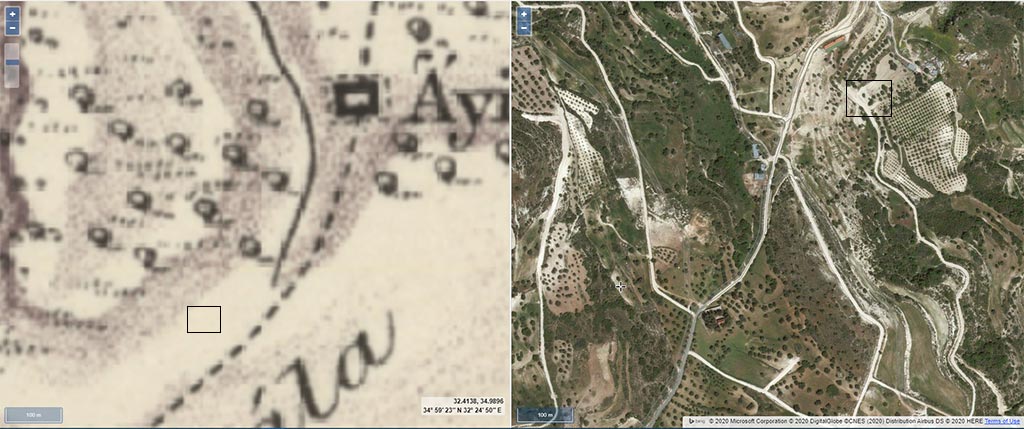
The old map is on the left. I have superimposed the actual location of the monastery, and as you can see, it is about a quarter of a mile out. This is unusual, as it is normally more accurate than that. But if you were going on the old map alone, then you would reasonably think that the ruins in the picture above are actually the old monastery, as they are much nearer.
Don't worry, I'm not suggesting that that is the case, but I was surprised to see how far off the mark the old map was. It is normally a lot better.
Bring Me Sunshine
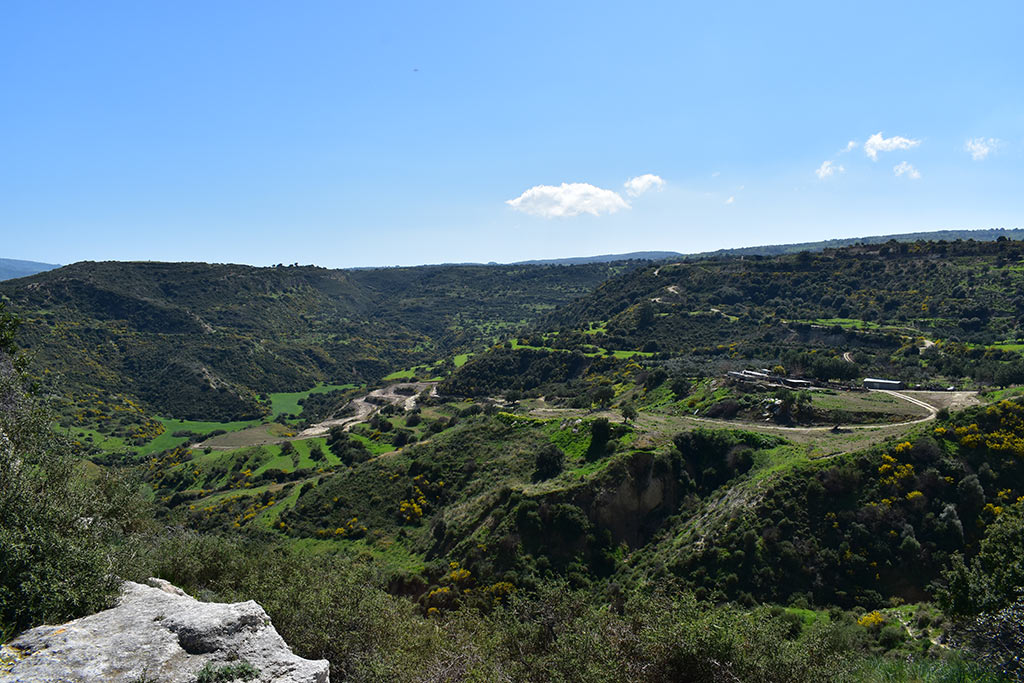
While writing this blog I did a bit of research and found out some more about the monastery. It turns out that in the past it was a bit of a big deal. The following is translated from some Greek text I found online:
The Monastery of Agios Georgios Nikoxylitis is located about 3 km northeast of the village of Drousseia, Paphos province. The nickname Nikoxylitis is not known where it came from, as is the exact date the monastery was founded. According to sources, the dating of the monastery dates back to the 9th to 10th century and was built by the monks of an older monastery dedicated again to Saint George, which they abandoned because of the Arab invasions.
The monastery acquired particular wealth and was at its peak during the Venetian occupation until the beginning of the 19th century, where it was one of the richest monasteries of Cyprus with large real estate and many shareholdings. The descending course of the Monastery began in 1808, when the Turks held all the bishops of the island hostage and demanded a huge sum from the Cypriot people in order to liberate them. It was then decided to divest part of the real estate of the richer temples and monasteries in order to free the bishops. Among the richest monasteries was the Monastery of St. George of Nikoxylitis, where much of its real estate was sold to individuals.
Only the church of Agios Georgios was left of the monastery, which was renovated from the foundations in 1923 after a fire. The church along the way was left untouched by earthquakes and was seriously damaged by earthquakes that struck Paphos in the 1950s. The chapel is stone-built in a single-aisle basilica style. Its interior is extremely austere as it consists of a simple iconostasis with few images.
The Monastery of St. George of Nikoxylitis, though a simple building, is one of our cultural heritage monuments, with a centuries-long history.
So perhaps the second set of ruins is part of the older monastery?
Enough about history, let's enjoy the view.
Spring Green
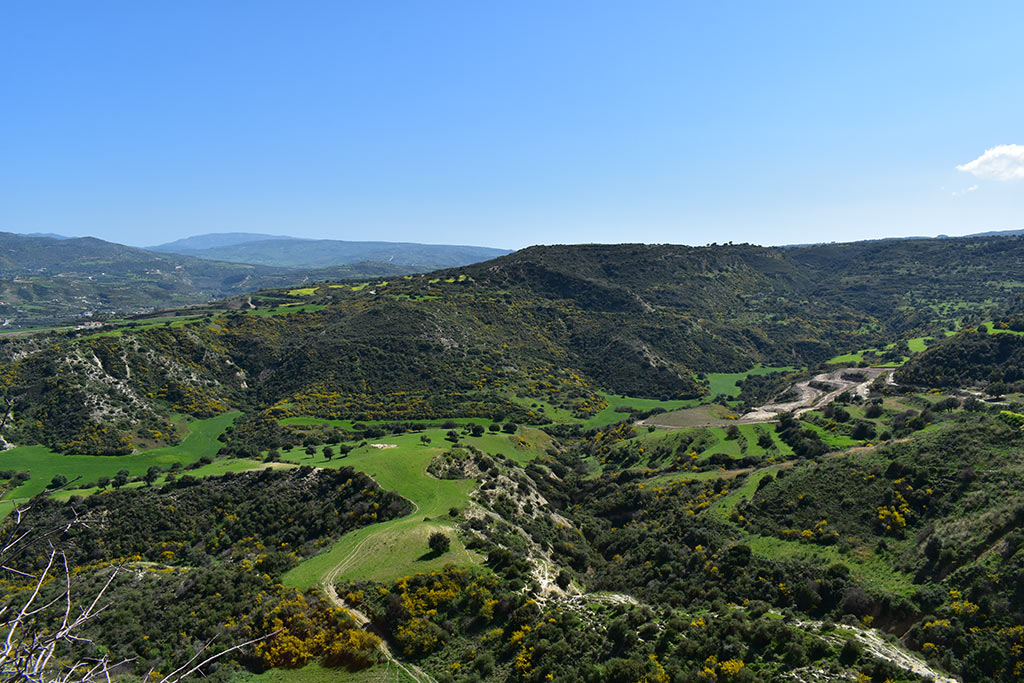
Ah, there is something magical about Cyprus in the springtime. I posted a 360 shot on our facebook page which is worth checking out too.
Page 4 of 7


Related Blogs:
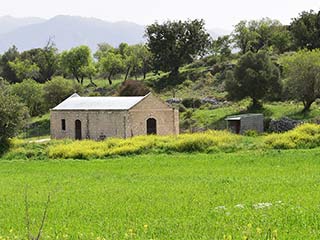
Agios Charalambos
Let's take a little break from flowers. I know that Cyprus looks lovely in the Spring, and that it abounds with colour and life. But it' time to take a break. With the Polemi Tulip Festival fast approaching, and the knowledge that another road trip from Max is just around the corner too, I think we need to look at something without petals.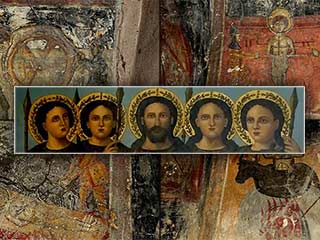
The barbaric frescoes of Agios Georgios Tou Sporou
It's time for another guest blog from Max. He's been out visiting some old churches and has uncovered some gruesome scenes...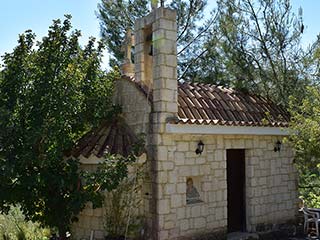
The Church of the Prophet Elias
As you drive to Polis on the B7, past Miliou, you will see a sign pointing to a church. If your Greek is as basic as ours, you will need Google Translate to tell you that it is the Church of the Prophet Elias. This is good to know, because you won't be able to find it on the map. When you see how small the church is, you will understand why...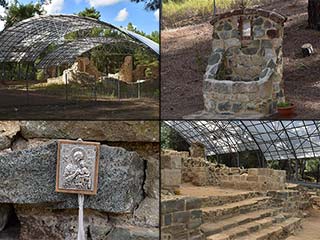
Gialia Monastery
In the northern reaches of Paphos forest lies an ancient monastery built over 1000 years ago. In ruins for over 400 years, Gialia Monastery was rediscovered in 1981, and excavated about a decade ago. It now provides an interesting and unique destination for the curious traveller...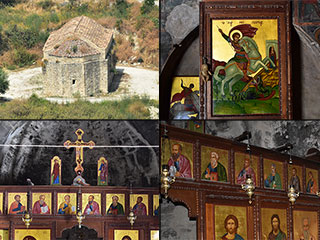
Ayios Georgios Koumanon Monastery
The Paphos Countryside is full of surprises. On any journey, you can guarantee that you will pass many interesting places without realising it. However, sometimes, if you go in search of a known location, it can prove elusive. Join us as we stalk this elusive old church through the Diarizos Valley countryside, before finally succumbing to its mysterious charms...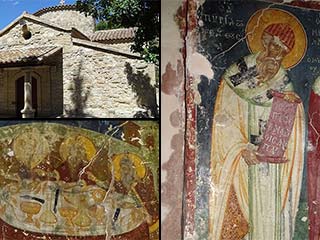
The Church of Saints Kerykos and Ioulitta
It's time for another guest blog from Max. He's taken a break from enlightening us about crystals and rock formations in the Paphos area, and has gone in search of some interesting church murals in Letymbou.Good Pages To Visit
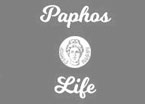
FB PagePaphos Life on Facebook
Like us on Facebook and stay notified of new blog posts.

FB PageOur Facebook Chat Group
Paphos Chat has been created for people who like our site and want to chat using Facebook. You can also easily upload photos of any size here. A lot of people are members of the Facebook chat group and the main forum. It's entirely up to you.
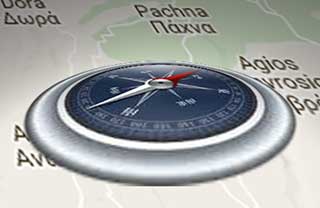
ListBlog Locations
Planning a day out? Then use our map of blog locations as a handy guide. Some of the places we visit our closer to each other than you might think, so take a look and start planning your next adventure...
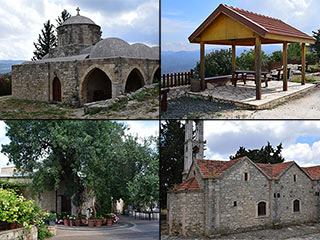
eBookCyprus Road Trip 01: the Kathikas - Panagia Loop
Let me take you on a journey around the region of Paphos, Cyprus. Starting at Paphos itself, we travel to Akoursos, then Kathikas, Kritou Terra and Simou. We continue past Lasa and Kannaviou, before taking in the delights of Panagia. Getting a bit more adventurous, we visit the abandoned villages of Statos and Agios Fotios, before passing through Choulou, Letymbou and Polemi, and rejoining the main Paphos - Polis road.
The route is suitable for all types of vehicle, and requires no off-roading. The guide contains about 130 photographs including shots of all the road signs you need to pay attention to, as well as some of the highlights you may experience along the way.
There are also several maps which will help you keep your bearings.
You can do this journey in a day, or you can break it up into chunks. You can also do it in reverse, to get some completely different views. It is entirely up to you.
